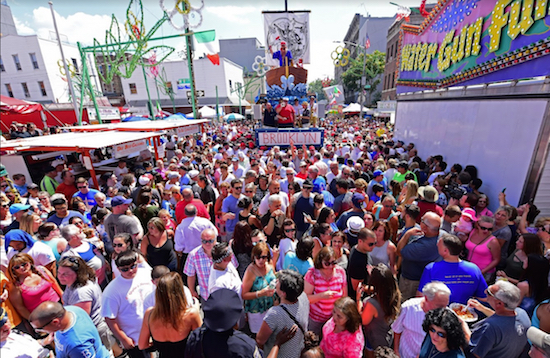Annual Our Lady of Mount Carmel Giglio Festival celebrates 130 years in Williamsburg
Brooklyn’s Take on Southern Italian Tradition Includes the Boat That Returns Beloved Saint

The row of burly men grimaced, their neck veins bulged and sweat dripped from their foreheads as they strained to raise the 4-ton wood tower that symbolizes a lily. Known as “Giglio,” which means “lily” in Italian, the 85-foot-high tower and the model sailing ship are part of a tradition that dates back to fifth century, when the Bishop of Nola, Paulino, offered himself as a hostage to North African pirates in exchange for a grieving woman’s son. So impressed was the sultan with Paulino’s selfless act, he permitted the prelate to return to Italy with his countrymen. San Paulino, as he later became styled, arrived home in a ship greeted by women bearing lilies.
Over the years, San Paulino’s triumphant return was celebrated in Nola with processions of lilies born first upon wood poles, then platforms with bouquets that grew larger and more elaborate. Brought to South Brooklyn in the 1880s by Nolani immigrants, flowers that originally symbolized purity evolved into the massive Giglio that promenade majestically through the streets of Williamsburg every year to mark the Feast of Our Lady of Mount Carmel and honor San Paulino di Nola.
“I had a lot of friends who were lifters,” said Tim Marsh, pausing to catch his breath during a lift of the ship, or “la barca,” which symbolizes San Paulino’s return. Marsh, who lives in Suffolk County, said listening to his friends’ accounts of the festival, the culture and comradeship shared by the “paranza,” or lifters, piqued his curiosity. “I tried, and I fell in love with the culture,” he explained. “My grandfather was originally from Calabria, so this isn’t too far removed from my own heritage. And I hope to pass this on to my son as part of his heritage.”
